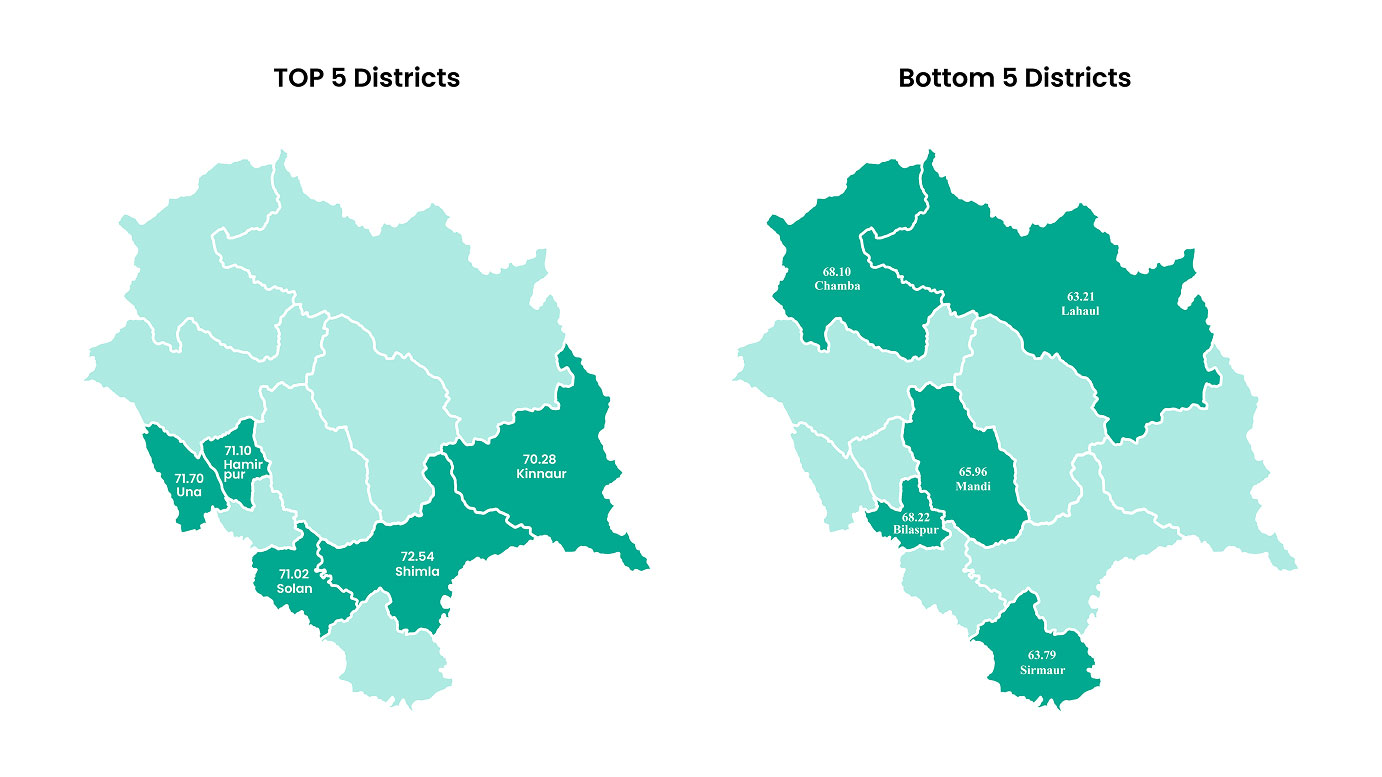What if choosing the right school was as easy as picking a restaurant?
In even the most remote corners of Himachal, parents can quickly find ratings for the nearest chai or maggi shop. But when it comes to choosing a school, the place where their child will learn, grow, and shape their future, decisions still rely heavily on informal recommendations from friends, family, or neighbours. That is about to change.

Hon’ble Chief Minister Shri Sukhvinder Singh Sukhu launching the Baseline School Accreditation and Ranking Report in Himachal Pradesh.
The Hon’ble Chief Minister of Himachal Pradesh has launched the Baseline School Ranking & Accreditation Report, grading 14,663 government schools from Grade A+ to D across six quality domains: Learning, Infrastructure & Facilities, Governance, Inclusive Practices, Teacher Professional Development, and Access.

Grade-wise interpretation of school performance based on percentage scores in the baseline accreditation report.

Six domains and their assigned weights used to calculate the total score for each school in Himachal Pradesh’s 2025–26 Baseline School Ranking and Accreditation Report.
Drawing on UDISE+ data and real-time dashboards from the Vidya Samiksha Kendra, the report offers a transparent, data-driven view of each school’s performance, pinpointing priority areas for improvement and enabling targeted interventions with smarter budget allocation.

Distribution of government schools in Himachal Pradesh across grade bands (A+ to D) based on the 2025–2026 baseline accreditation report.
Insights
- The findings show that out of the 14,663 government schools, the average school score is 68.60.
- Nearly 55% of schools fall in Grade B accreditation ranking in the baseline report 2025 - 2026.
- The top 3 domains where schools have scored the highest are–Access (82.25%), Learning (78.78%), and Governance (76.29%), reflecting wide enrollment coverage and administrative functionality.
- Inclusive Practices remains the weakest domain, with a state average of just 28.97%, revealing a persistent equity gap in the system.
- Infrastructure & Digital Readiness shows mixed results. ICT infrastructure (63.79%) and teacher attendance (66.17%) are strong, but low scores in teacher use of technology (32.60%) and availability of rooms for CWSN (39.14%) reveal that access to technology does not automatically translate into effective classroom integration.

Map showing the highest and lowest performing districts in Himachal Pradesh as per the 2025–26 Baseline School Ranking and Accreditation Report.
This district-level granularity allows policymakers and partners to focus resources where they will drive the greatest return on investment in learning outcomes.
- Top-performing districts—Shimla (72.54), Una (71.70), Hamirpur (71.10), Solan (71.02), and Kinnaur (70.28)—demonstrate balanced progress across most domains.
- Meanwhile, Lahaul (63.21), Sirmaur (63.79), Mandi (65.96), Chamba (68.10), and Bilaspur (68.22) require focused academic and administrative attention.
A well defined school accreditation framework helps schools track progress and continuously improve. It strengthens teaching, enhances infrastructure, fosters equitable practices, and ensures that every student receives the education they deserve. When implemented effectively, accreditation:
- Drives consistent improvement in teaching, learning, and leadership
- Aligns classrooms with NEP 2020 goals and foundational literacy benchmarks
- Encourages structured self-evaluation and continuous school development
- Supports professional development for teachers and school heads
- Builds trust among parents and communities
- Attracts funding and partnerships by showcasing high-impact practices
- Places students at the center with a focus on outcomes and well-being
The baseline school accreditation and ranking report in Himachal Pradesh serves multiple purposes. It helps identify model schools and their best practices, guides support to underperforming schools, and enables smarter allocation of funds. It also motivates schools to improve by creating visibility, benchmarks, and recognition. For policymakers, it provides a transparent, data-driven roadmap to raise standards and build a more accountable, equitable, and high-performing public school system.
Today, parents, school leaders, and communities can easily access school accreditation reports through a simple chat interface on SwiftChat app. With ease of access and shared knowledge of school rankings, decision-making will become simpler for parents, motivating for educators, and data-driven for governments.
By bringing trust, transparency, and clear indicators of quality into the public school system, accreditation empowers families to make informed choices about their children’s education.
Read More from
ConveGenius






